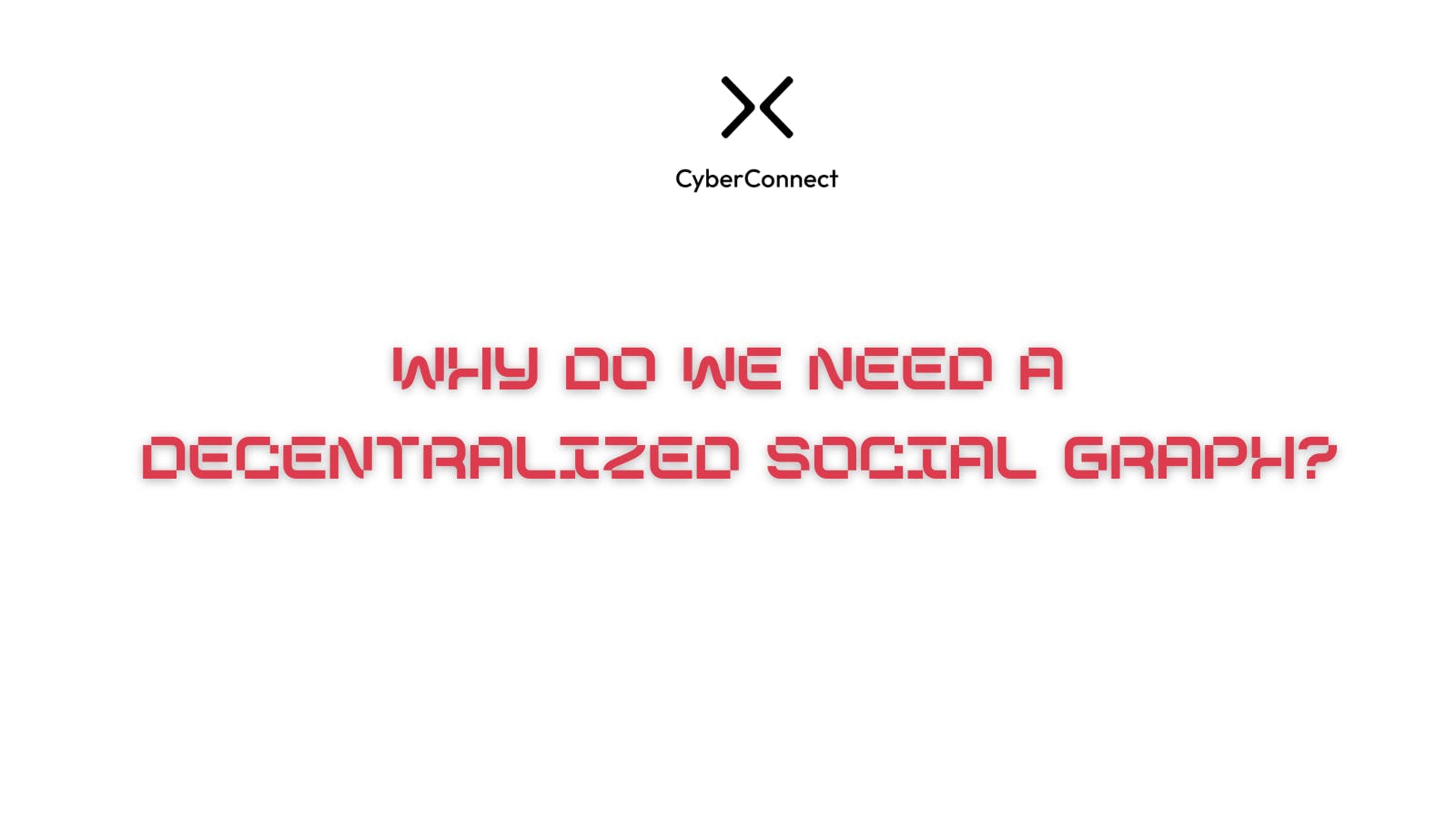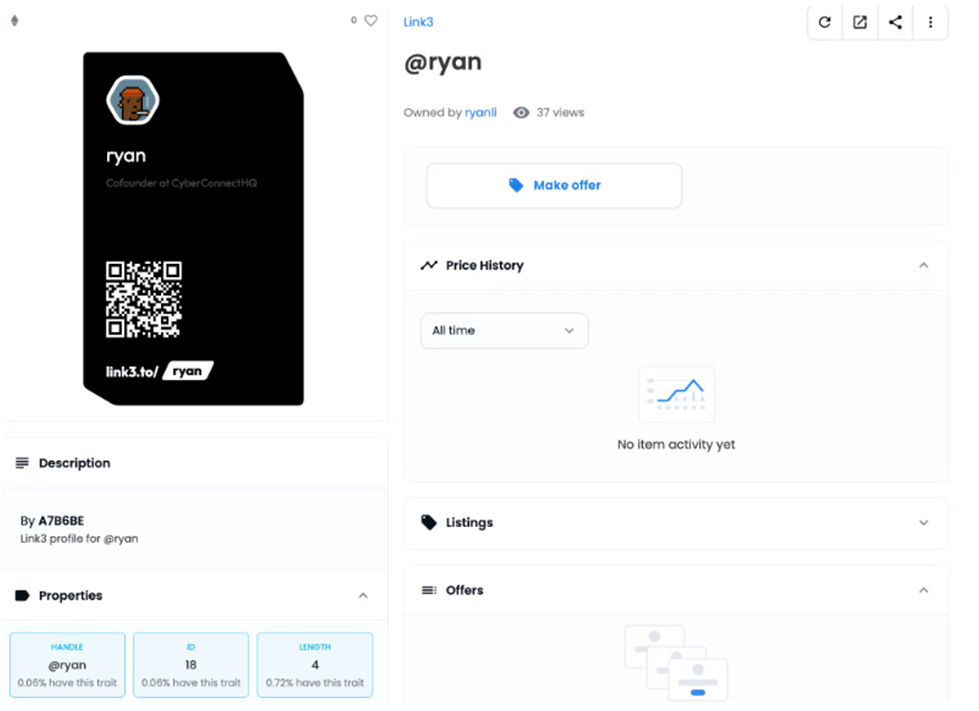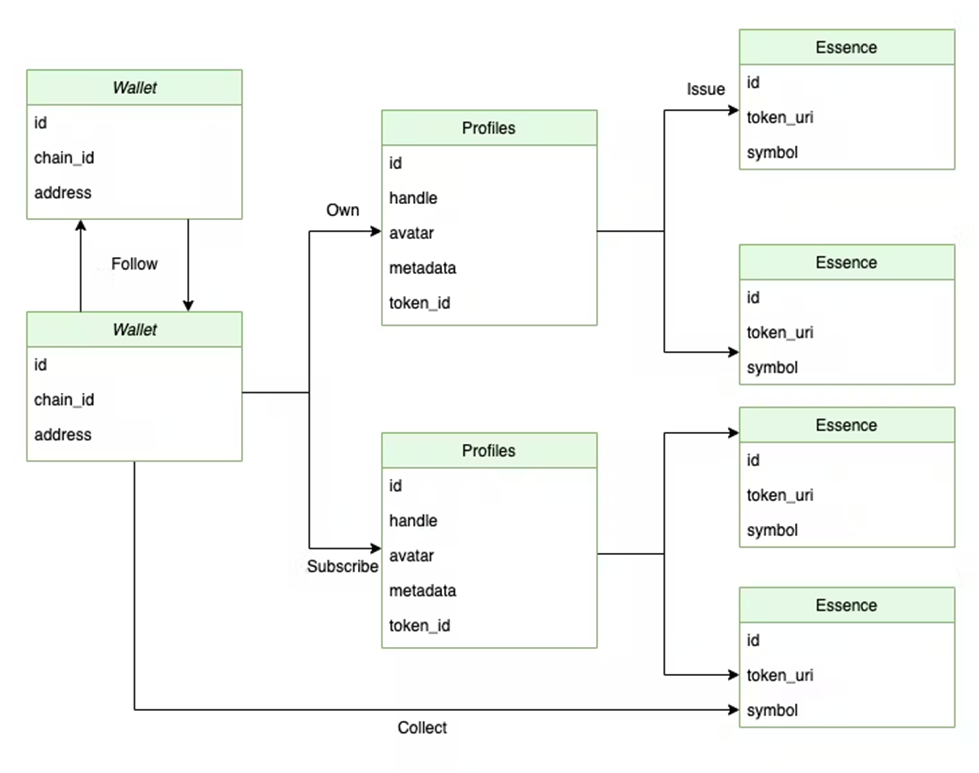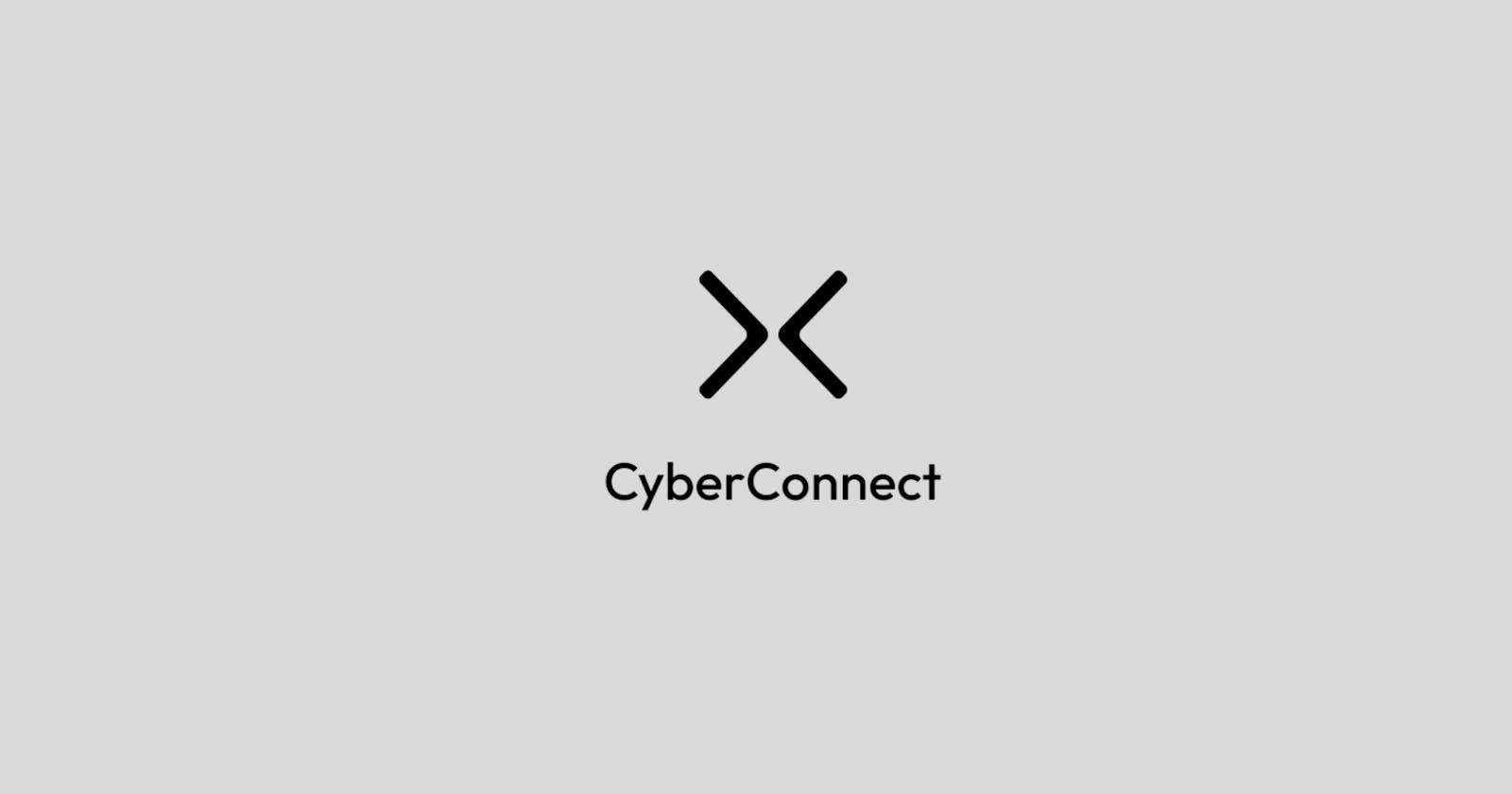Overview of CyberConnect on-chain protocol and explore the potential use cases.
Before jumping on CyberConnect, it’s essential to know what the social graph is to better understand CyberConnect.
What is Social Graph?
In essence, the social graph shows how you are connected to other people. It uses a graph to represent your connections to other users and parties. For instance, the contact and address books on your cell phone, Twitter, Facebook, and friendless Facebook are all regarded as components of a social graph.
The social graph in general, like social data, requires some kind of data abundance, and that’s why CyberConnect is built on top of IPFs and ceramic. Using these models, we connect based on their address, so all the social graph data that we’re recording right now when you’re writing to it becomes available. It's address A following address B, or address A is a friend of address B, and that means the whole model of the whole standard that we’re pushing is blockchain agnostic.
Overview of CyberConnect

Now, what is CyberConnect?
CyberConnect is a decentralized social graph protocol that aims to empower developers to bootstrap their network and also help them build personalised contextualised social experiences for their dapps and users by storing their social graph data in a decentralized manner, ensuring data integrity and data ownership, and essentially giving you back your data sovereignty. It has a data infrastructure that helps store and manage users’ self-sovereign social data at scale and a smart contract protocol for creating on-chain social networks. BNB chain, Polygon, Arbitrum Nova, Ethereum and Solana all currently support the smart contract protocol.
First, we'll look at the issues with the Web2 social graph, and then, in the end, we'll dig down into the potential use cases of CyberConnect.
What issues is CyberConnect trying to resolve?

Most of the time, people you know are truly disregarded. Let's use YouTube or Tiktok influencers as an example. You should own the data if you spend years on YouTube building a channel with 7 million subscribers, since that is your social capital. You should be able to control your community instead of YouTube, and by enabling that in Maple Lane, we're achieving just that.
Consider the case where CyberConnect is connected to all of those applications. We refer to this as enabling the mobility of their social capital since it allows influencers to switch platforms while maintaining the 7 million followers they acquired on the previous site. In many instances, it performs significantly better than using a subscription service or just receiving some recommendations.
Issues with the Web2 social graph
1. Tyranny of the titans
Why do we need a website version of the social graph and a server connection when there are already well-known social graphs in the web2 world, such as the massive social graphs on Facebook and Twitter? The first illustration is the presence of numerous huge firms there, including Facebook. They have total ownership and control over the social media data of the users. And users are subject to a great deal of influence.
2. Silos and Redundancy
Silos and redundancy mean every application they have has to create isolated social connections. So, for most people’s experience, you add someone as a friend in some social apps like WeChat, but you are not friends in other social apps. This creates silos, and at the same time, it creates difficulties for bootstrapping users and application developers. For example, if you want to develop a new social application, you have to start from scratch and acquire a user base from there.
3. Difficult Bootsrapping
The greater challenge still exists for developers. Not only is the social media industry today more centralized than the banking industry, but it is also likely more competitive. The social network needs to be rebuilt every time a new application tries to make headway in this congested market. It requires labour, money, time, and a little bit of luck. What if there existed a single, decentralized, open-source social network that anybody could contribute to? Any application with substantial entertainment and utilitarian value can succeed without expending valuable resources on reconstructing what currently exists.
So, that’s the issue with the current social graph.
CyberConnect tries to solve all these problems with several design principles.
Design principles
1. Self-sovereignty:
The first one is about self-sovereignty. Which means every person should own their own social graph data, so nobody else can change, update, or delete your data without your permission.
2. Interoperability and portability:
This social connection data, or social graph, is portable across different Web 3 applications.
3. Mutability:
CyberConnect trying to change or update your social connection data in a very cost efficient way.
4. Data Abundance:
So, someone may ask, "Why do we not represent social connection in a token format or store it on popular layer one blockchain infrastructures like Ethereum or Solana?" The underlying assumption is about data scarcity versus data abundance. That is, we believe social graph data or social connection data is abundant by nature, which means there could be a lot of it, and storing it on-chain could be very expensive and inefficient. As a result, CyberConnect chose to store the data on cheap, decentralized data stores such as IPFS or arweave.
Features of CyberConnect
Self-sovereign: The social graph data is accessible to everyone, but only users have complete control over their own social graphs, including the ability to add, remove, and update connections.
Decentralized governance: We are upholding the principles of security, permissionlessness, and decentralized governance, which are inspired by Ethereum's purpose. Decentralized governance will control the protocol's long-term development.
Publicly accessible: All Dapps have open access to the decentralized social network data as an optional feature, allowing developers to take advantage of relationships between users to expand beyond their current user base.
Token-incentivized: We provide a token-incentivized strategy at the initial stage to equitably reward all participants who help bootstrap the social graph in order to promote the long-term development of the CyberConnect Protocol.
Blockchain-agnostic: The protocol is designed for a multi-blockchain ecosystem rather than being tied to a single blockchain. All connections from blockchains will be supported by the blockchain-agnostic feature.
Hmm, Interesting? So, now the question is how CyberConnect actually works? Let's get into it.
How CyberConnect works?
Profile
A CyberConnect profile is identical to a profile in Web2 social apps because it is the starting point for any on-chain operation. Each profile is an ERC-721 NFT and is the owner of its content and paying subscribers. Additionally, one user may have multiple profiles. As of right now, the protocol only permits people to mint profiles through Link3 on Ethereum; however, on the testnet, minting profiles is free.

Content
Users can begin developing their on-chain social network by creating "content" after creating their profiles. Content in CyberConnect can be anything a user develops, issues, or produces. Through this approach, dynamic use cases like:
- Content producers that upload quick clips to video sites,
- Event organisers distributing participation badges as a reward or recognition,
- Students receive recognised credentials from universities, such as diplomas.
An ERC-721 coin named EssenceNFT is used to represent all content. Depending on the developer's preference, the content itself may be kept on various storage platforms like IPFS or Arweave.
Additionally, Collect Middleware Contracts are provided by the protocol. As a result, each profile owner can add unique functionality regarding the nature of the tokens and the "collection" requirements (such as pay to collect or hold NFT to collect) (e.g., transferable or non-transferable). Link3 is an illustration. EssenceNFT is used by the Web3 social network of verifiable identities to enable organisation profiles to issue badges of attendance, or SBTs. EssenceNFT is used by our own demo app to represent a post.


Subscribe
Web3 users can allow paid subscriptions on their accounts using CyberConnect's Smart Contract Protocol. Rules for profile subscriptions will need to be established, and our Subscribe Middleware Contracts will be crucial for this. Upon successful subscription, each subscriber will receive a SubscribeNFT.

To get an idea, look at the illustration below.

Reference: https://cyberconnect.hashnode.dev/getting-started-with-cyberconnect
Potential use cases of CyberConnect:
The decentralized social graph is envisioned by us as a set of unilateral pathways between various blockchain addresses. This flexible, straightforward framework has the ability to accommodate a wide range of intriguing Web 3.0 use cases.
The open social network driven by the CyberConnect Protocol can be integrated with decentralized social media services to launch the Web 3.0 versions of Medium, LinkedIn, and Twitter.
Instant messaging services built on the Web 3.0 platform can take advantage of the bidirectional sub-graph (meaning two users followed each other) as the contact list to increase user numbers.
To improve their social aspects, blockchain games can import the social graph. It will be simple for players to interact and play with their on-chain buddies.
Users are cooperatively adding to the decentralized social graph, so as the social graph becomes more widely used, the network effect becomes greater. All Dapps using the CyberConnect Protocol will benefit from a new connection established in one Dapp.
References/Resources:
https://cyberconnect.hashnode.dev/getting-started-with-cyberconnect
